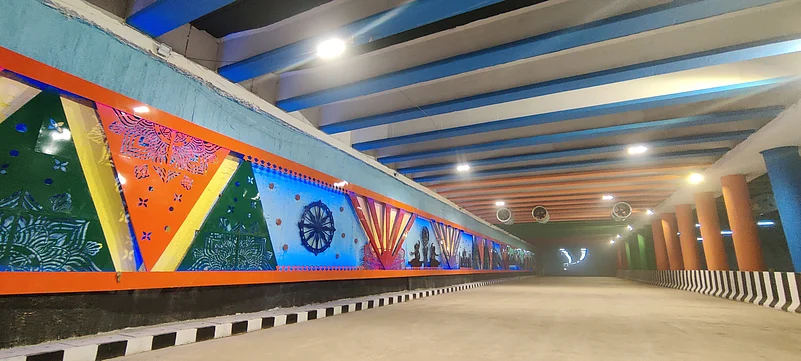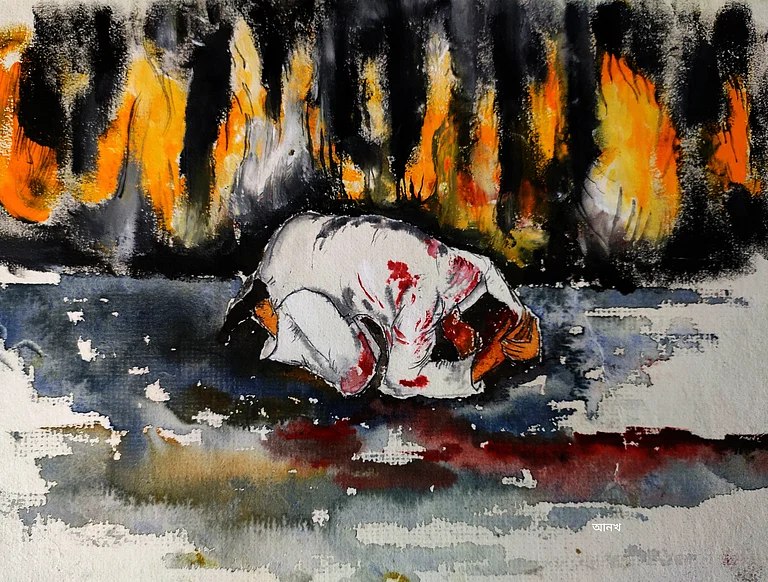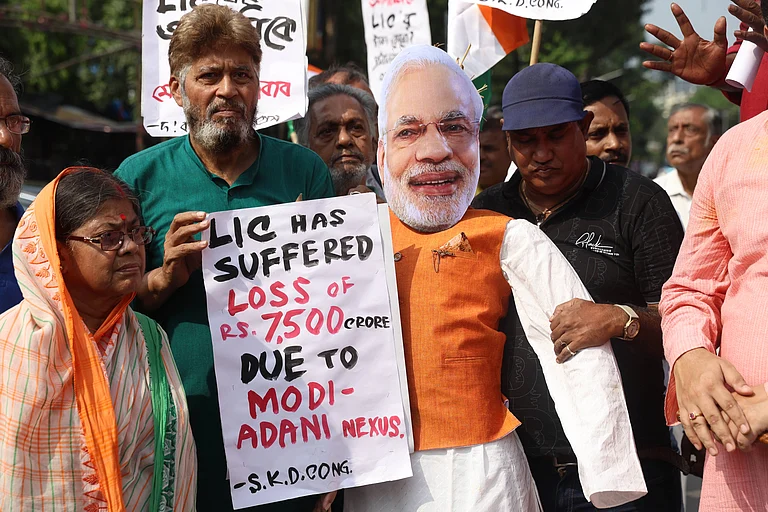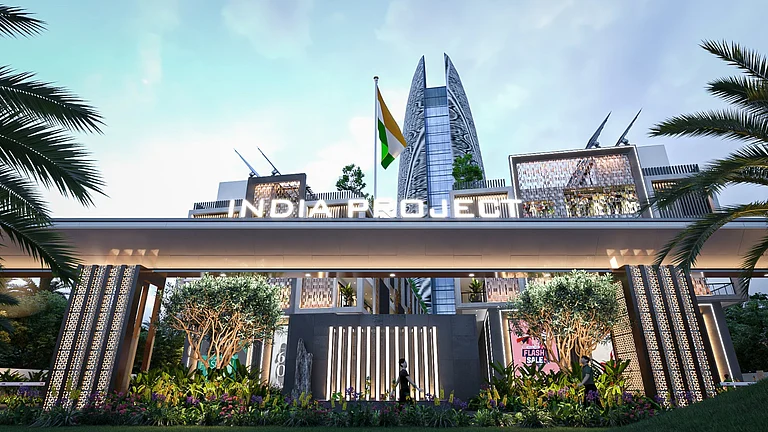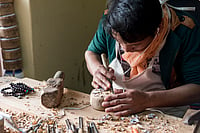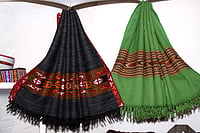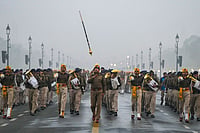
Dwarka tunnel is a 5.1 km in length, including a 3.6 km eight-lane stretch.
Inside the tunnel a real-time visual retreat is a fluttering 3600-meter-long national flag from one corner to the other end.
Him Chatterjee, a Shimla-based creative artist, has conceptualised the transformation of the tunnel’s vast interior with the underlying idea was to showcase India’s cultural diversity and its sacred rivers, temples, birds, trees, and monuments through murals and art installations.
Show me a wall, and I will drench it in colours. Hand me a brush, and I will make the sacred Ganga flow across a piece of canvas. And, if you show me a tunnel— rough and rusty—I will take you on a journey through history, mythology, and the vibrant culture of India, spanning 36 states and union territories, all within a five-to-six-minute drive.
Step inside the newly opened Dwarka tunnel, and you will not only embark on a marvellous journey but also discover a boundless cultural heritage, visually created—all through a 5.1 km length, including a 3.6 km eight-lane stretch. What makes the artwork inside the tunnel a real-time visual retreat is the fluttering 3600-meter-long national flag from one corner to the other end.
According to the NHAI, the Dwarka tunnel is India’s longest and widest urban infrastructure project in the Delhi-NCR region.
Now meet Him Chatterjee, a Shimla-based creative artist who conceptualised the transformation of the tunnel’s vast interior—its walls, columns, and roof—into a live canvas. As per him, the underlying idea was to showcase India’s cultural diversity and its sacred rivers, temples, birds, trees, and monuments through murals and art installations.
“The toughest part, for me as an artist, was choosing a single theme to reflect India’s vast cultural diversity and richness. But, thanks to my earlier work on the 1.36 km Pragati Maidan Corridor, completed in June 2022, this project became an especially exciting journey,” says Chatterjee, who is the son of the legendary late painter Sanat Chattarjee, the last disciple of Asit Kumar Haldar, exponent of the Bengal school of art.
Wall painting in India has a long tradition, with artists, sculptors, and painters over the centuries creating landmark works—often on religious, historical, and contemporary themes—to teach and preserve the culture of their times.
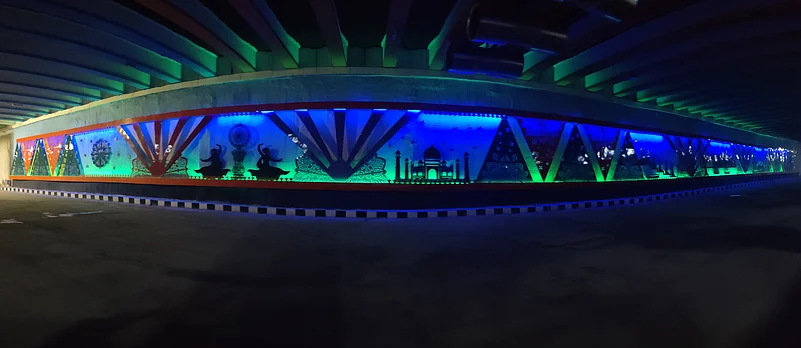
However, says Chattarjee, public art, on the other hand, consists of art that we see outdoors in a public space, which includes murals, sculptures, installations, street art, and live performance art. This kind of artwork is open to all, regardless of the type of viewer, who gain aesthetic pleasure and enrich their knowledge.
For him, public art—a form he has begun practising in public spaces, whether through murals, sculptures, installations, or live performances—remarkably transforms open spaces into shared experiences of beauty, aesthetic delight, and cultural insight.
To Chatterjee, the Dwarka tunnel offered a unique mega canvas with 7.5-meter-high walls and 36 compartments—18 on each side—coincidentally matching India’s 28 states and 8 union territories. This allowed him to depict the nation’s diversity from every state and union territory through his skilful and creative mind.
“Globally, the only comparable work is in Korea at 34,000 sq. meters, but the Dwarka tunnel surpasses it as the world’s largest public art canvas at 51,478 sq. meters,” he says.
The first visual presentation of Chatterjee’s murals at the tunnel begins with Uttarakhand—the ‘Dev Bhumi’—and the entire wall art transforms as his story of mythology unfolds through colours. The sacred Ganga flows in all its eternal grace, accompanied by other incredible spiritual landmarks, including the Laxman Jhula, Gangotri, Kedarnath, and Badrinath temples.
“I made sure to include everything that represents the state’s presence. Kavad yatra to the state’s wildlife—flying birds and dancing peacocks, the national bird—also local lifestyles, yoga, and Ayurveda, as the state is a storehouse of ancient biodiversity. Mesmerising Ganga aarti is also a retreat to the eyes,” he explained.
The project has been named “BharatBhagya Vidhata”—a core concept to bring India’s uniqueness, prosperity, and cultural legacy to this running canvas. The artworks flow seamlessly, with the Ashok Chakra—a symbol of progress, righteousness, motion, and justice—marking the beginning and end of each state and union territory.
The banyan, India’s iconic tree symbolising immortality, longevity, and shelter, with its rich religious and ecological significance, also leaves a lasting impact.
As visitors move forward, they can feel the grandeur of Indian monuments in Rajasthan, Delhi, UP, Madhya Pradesh, and Southern states, including Andhra Pradesh. The Ram Mandir at Ayodhya and the historic Taj Mahal are notable landmarks. Indian classical dances, the Jagannath Temple, Himachal’s popular temples, the Himachal Cap, Kashmir’s handicrafts, Dal Lake, Chandigarh’s Rock Garden, and Sukhna Lake can make the experience memorable.
The vibrant culture of Punjab, including its folk music—Bhangra —and the Golden Temple, as well as Gujarat, Chhattisgarh, Manipur, and the entire Northeast, is showcased, along with Cellular Jail (Port Blair) and Delhi. Additionally, there are murals of the Indian Parliament, Mahatma Gandhi, and other historical figures.
Finally, by the time visitors exit the tunnel after a five- to six-minute journey, they emerge enriched with an experience, accompanied by the flight of painted birds that seem to soar alongside them.
Chatterjee gives a lot of credit for the work to his team, including Sandeep Tiwari, a seasoned man with experience in advertising, for his tireless efforts in ensuring the project’s timely completion.
Taking pride in his art creation—a new record in his life—Chatterjee says, “Never before had I worked on such a colossal 8 km canvas. Every state and union territory has been represented in vivid, hand-painted art by blending creativity with technology. I believe the initiative sets a new benchmark in public art and offers younger artists an inspiring lesson in taking culture beyond galleries and museums.”






